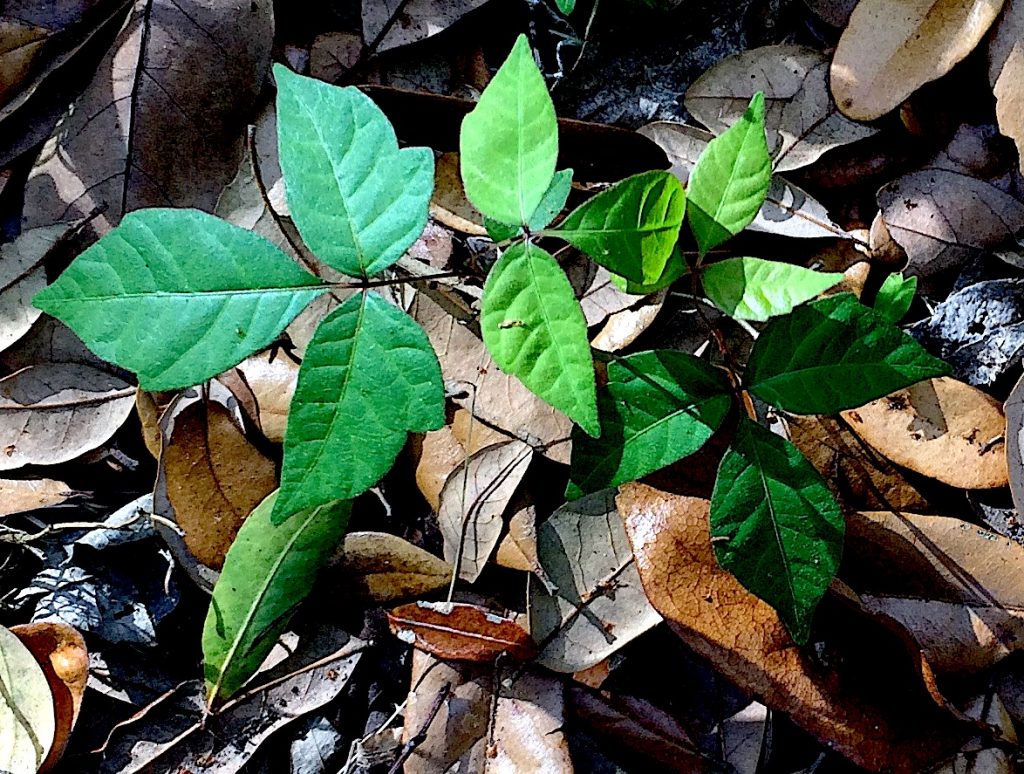
Avoid Poison Ivy which is also sprouting. Photo by Green Deane
If you think you are not allergic to poison Ivy you might become one of those people who tell me every few weeks how they ended up in the hospital because they thought they weren’t allergic to it. We are all born with a certain amount of resistance to poison ivy, some are born with none — me — some are born with a lot, my mother. Those are the ones who come contact it many times over many years — usually intentionally — and end up in the hospital as each exposure reduces resistance. Keep playing with fire one gets burnt. I was reminded of that this week.

Did “Socks” meet his end here? Photo by Green Deane
On Seminole-Wekiva Bike Trail this Tuesday past I rode upon a fellow yelling and throwing Paper Mulberry branches at the highway fence (across from the rest area on I-4.) As that was unusual I stopped. He said a big brown python has taken his cat and was in the bushes. As I am used to going into bushes and I like cats I went in but could not see any python or cat. I did recover his shoe. As there are hundreds of cement road barriers there (for highway construction) a python might find protection in their labyrinth and stay warm for the winter. The biggest python found to date north of Miami was a pregnant 300-pound, 16-footer pulled out of a culvert in Zolfo Springs last February, 75 miles south of Tampa. The fellow on the trail said he stopped at the rest area on I-4 and let his cat — Socks — out. He said he saw the snake by the cat but the cat was unconcerned. Details are sketchy. The man was quite upset… imagine if it had been a small child… He said his girlfriend was still in the rest area looking for the snake. The fellow seemed sincere and had a cut on his ankle apparently from rummage in the brush or climbing the fence. I made three dives in but didn’t see anything except, unfortunately, poison ivy. So I cut my ride short to wash off any poison ivy oil and told him about it. Poison ivy shows up on the third day with me — or 48 hours post exposure — and poor Socks I think was supper.
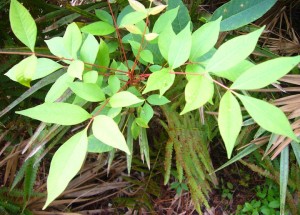
Poison Sumac. Note the red stems. Photo by Green Deane
There’s an amazing amount of misinformation about poison ivy on the Internet, even on medical sites that should know better. While there may indeed be three people among the seven billion of us who are absolutely immune to poison ivy, the 6,999,997 rest of us are not. It is more accurate to say we differ in our resistance and rate of expose. Said another way, nearly everyone will get poison ivy if they are exposed to it long enough, including the 20 percent who are really resistant. For some that is one exposure, for others dozens. The folks who say “I’m immune to poison ivy” are the prime candidates because they are not avoiding it. Over the years I have spoken to many a person who was extremely surprise when they got their first case of poison ivy because they were “immune” and had to got to the hospital. The point is you will get poison ivy at some point if you keep getting exposed to it so the best course of action is to avoid it and keep that day as far away as possible, if ever. Dr. John Kingsbury, who was an expert on toxicology, says the plant cells have to be “breeched” to release the oil, that just rubbing against the plant will not cause a problem. He added, however, that an insect chewing part of a leaf would release the oil so even a small amount of crushed cells can release enough oil to cause a reaction. He was adamant that soap did no good and that the contamination was immediate. Other views have disagree in the 47 years since he wrote his book saying that non-oil soaps, even plan cold water helps if used immediately.
Incidentally, there is little difference between Poison Ivy and “Poison oak.” There’s no agreement whether they one or two species. Best guess is different varieties of the same species. From our point of view it doesn’t matter. It, or they, are bad. In fact there are six related species that can give people rashes or other allergic reactions: Mangoes, cashews, pistachios, poison ivy, poison sumac, and Brazilian pepper. Incidentally Poison Ivy climbs trees, Poison Oak does not.
All that said there are some interesting facts about poison ivy. Only humans, some other primates, and guinea pigs can get it (we also don’t make vitamin C.) Your dog and cat can’t get poison ivy but they can carry the oil, urushiol, on their fur and give it to you, and that oil is active for years. Poison ivy is also a very nutritious, high-protein food for deer as well as rabbits. Some 60 birds eat the fruit and bees visit the blossoms. And truth be told I once got Poison Ivy off the feathers of a duck.
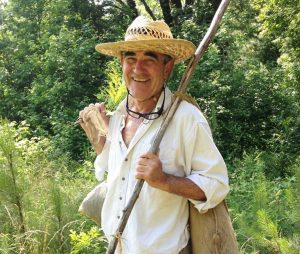
Will Endres Jr. 1945-2021
What is fascinating is how Poison Ivy works. The oil “locks” onto your skin cells, making the protein sticky, essentially interrupting the chemical signal from the skin to the rest of the body. Thus the area expose is viewed as foreign, so the body attacks it. The result is sores, itching and bleeding. As bad as that is it also has a positive side. Native Americans would put poison ivy sap on warts so the body would get rid of the warts. That’s some interesting thinking. There is also a controversial side to the plant: Eating poison ivy to confer immunity. No doctor would recommend it nor do I. However, Euell Gibbons, the previous generation’s back-to-nature guy, wrote that he ate some every spring and never had a case of poison ivy there after. I knew an herbalist — Will Endres in North Carolina, who did the same thing every year. And I personally have seen a person eat it, again in the spring. She was a retired bio-chemist. There are three theories:
One is they all eat the plant in the spring when perhaps urushiol production is low. Or, two, the mucus that covers our insides protects us and we just digest the oil (the Pennsylvania Dutch ate poison ivy wrapped in bread.) A third possibility is it does somehow confer a protection. Kingsbury was firm in his thinking that eating it was very dangerous and that the plant was dangerous all year long. Lastly think of poison ivy oil as clear bicycle chain grease. It really can’t be washed off: It has to be washed and rubbed off even though you can’t see it… and no welts as of this writing…
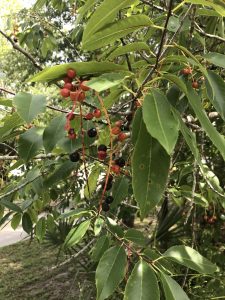
Black Cherries ripening in June. Photo by Green Deane
Black Cherries usually get mentioned several times every spring. Locally one usually finds them ripening in April. That’s the target month (and for blackberries as well.) But every year if you look around you can find a few that fruit much later such as in mid- to late June. My neighbor has a tree ripening now and I saw some on the Seminole Wekiva trail near the rest area mentioned above. It is safe to say Black Cherries look better than they taste. There is an initial cherry sweetness but then a residual bitterness takes over whereas chokecherries are bad start to finish. There were four large chokecherry trees on the other side of our lawn where I grew up in Maine. They were quite irritating: They looked wonderful but tasted awful (unless made into wine.) Black Cherries, like the chokecherries, are much better processed into jelly and wine (or cough medicine from the bark.) Do not eat the seeds. To read more about the Black Cherry go here.
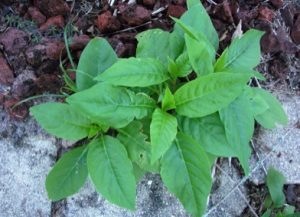
Young Poke is boiled twice before eating. Photo by Green Deane
When is a salad not a salad? When it’s poke sallet. Though they sound the same (both pronounced “salad” and spelling can vary) the one in English means raw greens. The other in French means cooked greens. Unfortunately a popular song in 1968 spelled it the wrong way on the record label and people have been getting sick ever since. (In fairness in the song the lyrics say Annie cooked the greens. She was so poor that was all she had to eat.) Pokeweed has to be cooked, preferably boiled at least twice in two changes of water. In fact I got a message this week from a writer who thought poke sallet meant salad and got ill from eating a salad of raw poke leaves. Don’t do it. This brings up another aspect of pokeweed. People ask me if boiling it twice reduces the nutrition. The answer is hardly at all. The only nutrient pokeweed has is Beta Carotene. That is a fat soluble. Boiling it doesn’t have much effect on the Beta Carotene content (it also has magnesium in the middle of the chlorophyl molecule.) Boiling the poke weed carries away the toxins and makes the magnesium in the chlorophyl more available. Cook your poke! To read more about pokeweed, go here.
Despite my website’s title, Eat The Weeds And Other Things, Too, YUCK! is word that lands in my mailbox regularly, sprinkled through the missives like spice on an entree. It reminds me of what a great language English is. English is not some frou-frou glot of genteel nuances or harmonic sounds. And while it might have started out as German Lite English has borrowed so much from other languages that it’s the largest and most predominate tongue on Earth. But beyond that English is fit. It’s muscular, punchy, to the point. English has brawn. It works out, demands attention, and gets things done. Yelling EXTINGUISH THE CONFLAGRATION will stir few to action. PUT THE FIRE OUT will. Or ouer bord hominem compared to Man Overboard. Latin just can’t hold a candelabra to English.
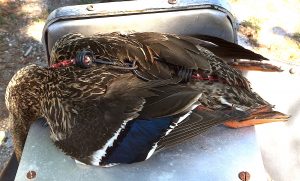
Hit by a car, taken home on a motorcycle, aged in the frig.
So yes, “yuck,” a taut, vigorous English word populates my emails. Why? The answer is the Acorn Grub video, the Bon Appetit video, articles on the edibility of dogs and cats, Guinea pigs, horses, alligator, armadillos, slugs and snails, earthworms, scorpions, spiders and some four dozen other insects. I know of a naturalist who starts each class on wild edibles by eating a live beetle he finds in front of everyone. To him all black beetles are edible. “Yuck” you say. Perhaps. So powerful is that one word that several folks have sent just one word emails to me… Yuck is succinct. It tells me the writer’s mental state and their opinion, which is fine. In matters of taste there is no debate: Only matters of truth are worthy of debate. And just as some find these critters “yucky” so to do many find eating weeds “yucky.” I hear from them, also. Some did not like a recent mention of me cooking a duck hit by a car (the one with poison ivy on its feathers.) “Yuck” was the response of choice but the duck was not yucky… I guarantee. It was just ducky.
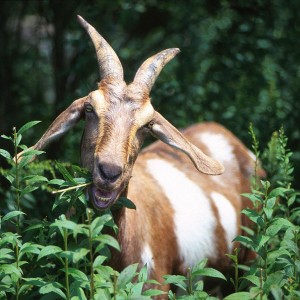
Goat on the lam…
Let’s say you were going to take a test. And you knew out of 100 possible questions only seven questions were going to be asked and only those seven. Which would you study for, the 93 questions that will not be asked or the seven that will be asked? One would expect you to study the seven questions you know are going to be asked. It is no different when learning edible wild plants. About 93 percent of the plants are not edible. Around seven percent are (generous estimates say 10% but it varies with geography.) Which should you study if you are interested in edible wild plants? The seven percent that are edible or the 93 percent that are not? Most folks interested in edible wild plants go about it backwards. They don’t go looking for known edibles but wonder what all unknown plants are. Then they ask someone to identify them. More than nine times out of ten it is not edible. Looking for known edibles is far more productive. But if you still have a plant you want identified, post it on the Green Deane Forum. We have a board dedicated to just identifying plants, which is also the most popular board. You can join the forum by clicking on the FORUM button in the menu line.
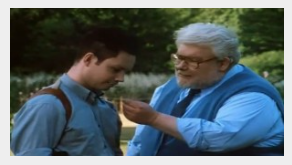
Do you recognize the Pie In The Sky Actor?
There’s a quaint British detective series which involves an obese chef who is also a senior police detective. (Only the Brits can get away with funding and producing such a show theme.) In one program the main character’s job is to help protect and feed a rather nasty young woman who is to testify against her deadly husband. At the same time the detective-chef is having a difficult time getting quality herbs for his restaurant. The “safe” house where she is staying just happens to have fantastic herbs just growing out back which he discovers. There’s a wonderful exchange about wild food between the avuncular detective-chef and one of the young armed officers protecting the woman. It’s an attitude most of us foragers have seen before. To see the 42-second clip click here.
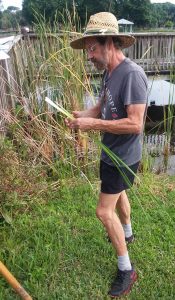
Teaching a foraging class in West Palm Beach
Foraging classes this weekend are in two familar places: Largo and east Orlando. The former class is small at this writing, the latter is large. As I often say I live with the average. Also note folks are signing up for foraging classes in mid-July in Honea Path, South Carolina.
Saturday, June 26th, Eagle Park Lake, 1800 Keene Road, Largo, FL 33771. 9 a.m. to noon, meet at the pavilion near the dog park.
Sunday, June 27th, Blanchard Park, 10501 Jay Blanchard Trail, Orlando, FL 32817. 9 a.m. to noon. Meet beside the tennis courts.
Saturday July 3rd, Boulware Springs Park, 3420 SE 15th St., Gainesville, FL 32641. Meet at the picnic tables next to the pump house. 9 a.m. to noon.
Saturday July 17th, Classes at 9 a.m. and 1 p.m at Putney Farm, 1624 Taylor Rd, Honea Path, SC 29654.
Sunday July 18th, Classes at 9 a.m. and 1 p.m at Putney Farm, 1624 Taylor Rd, Honea Path, SC 29654.
For more information, to prepay or sign up for a class go here.
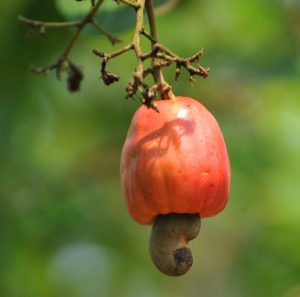
The red cashew apple is edible.
One of the more strange trees is the cashew. The species is closely related to poison ivy, poison oak, poison sumac, edible sumac, mangos, and pistachios. The cashew itself is an exceptionally toxic tree. The cashew “seed” is actually an enclosed nut inside an enclosed shell. It is surrounded by a toxic sap. The sap is dangerous. The process of making the seed edible is dangerous. While the end product is a tasty nut it is among the least nutritious of tree seeds. Oddly the cashew “apple” is quite edible. You can read more about the cashew here.

Green Deane videos are now available on a USB.
My nine-DVD set of 135 videos has been phased out and replaced by a 150-video USB. The USB videos are the same videos I have on You Tube. Some people like to have their own copy. The USB videos have to be copied to your computer to play. If you want to order the USB go to the DVD/USB order button on the top right of this page. That will take you to an order form. I’d like to thank all of you who ordered the DVD set over the years which required me to burn over 5,000 DVDs individually.

Green Deane Forum
Want to identify a plant? Perhaps you’re looking for a foraging reference? You might have a UFO, an Unidentified Flowering Object, you want identified. On the Green Deane Forum we — including Green Deane and others from around the world — chat about foraging all year. And it’s not just about warm-weather plants or just North American flora. Many nations share common weeds so there’s a lot to talk. There’s also more than weeds. The reference section has information for foraging around the world. There are also articles on food preservation, and forgotten skills from making bows to fermenting food. 
Your donations to upgrade the EatTheWeeds website and fund a book were appreciated. A book manuscript has been turned it. It had 425 articles, 1326 plants and a third of a million words. What it will be when the publisher is done with it next year is unknown. It will be published in the spring of 2023. Writing it took a significant chunk of time out of my life from which I have still not recovered. (Many things got put off.) The next phase is to update all the content on the website between now and publication date. Also note as it states above the 135-video DVD set has been phased out for 150-video USB. Times and formats change. Which reminds me I need to revisit many plants and make some new videos.
This is weekly newsletter #461. If you want to subscribe to this free newsletter you can find the sign-up form in the menu at the top of the page.

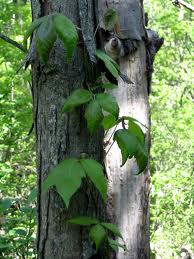

Many moons ago, I worked for Entomologists. They told me the “Meat Tenderizer” containing Papain (from Papayas) neutralized insect bites. It has worked for me., just wet the bite and rub it in. Do it immediately. Papain breaks open the foreign protein cells – as fire ants/mosquitoes/etc., neutralizing it. Like on that cheap but tough T-bone streak. // Why would it not work on Poison Ivy? Any volunteers?
How I wish I was allowed to take chemistry. We know the oils in poison ivy make protein cells sticky I don’t know if the action of papain would make them unsticky.